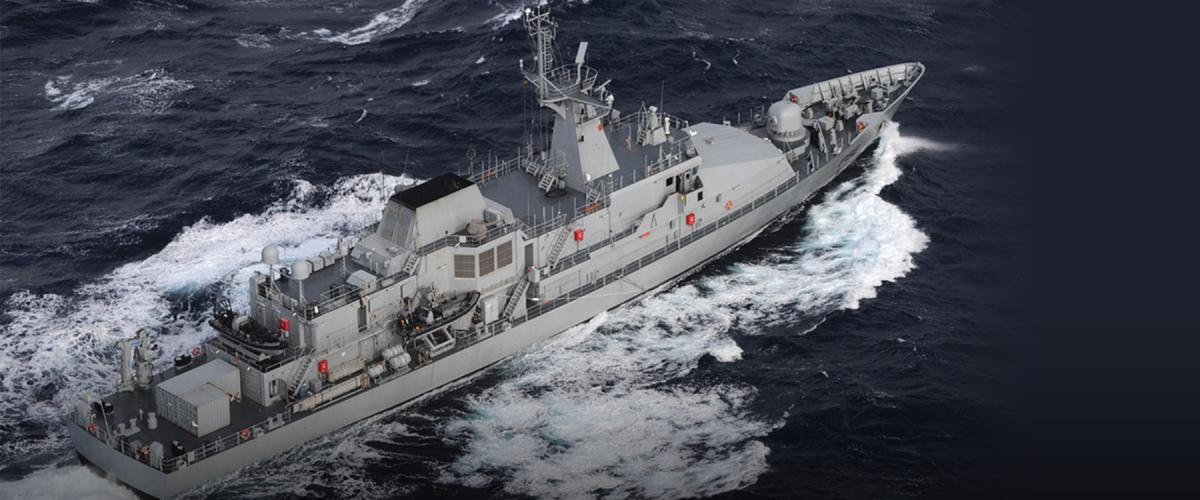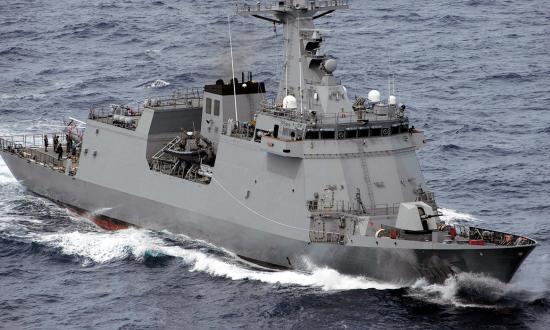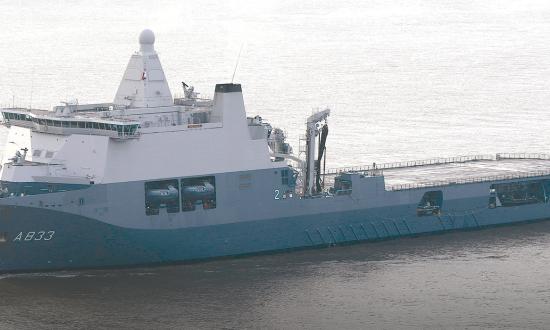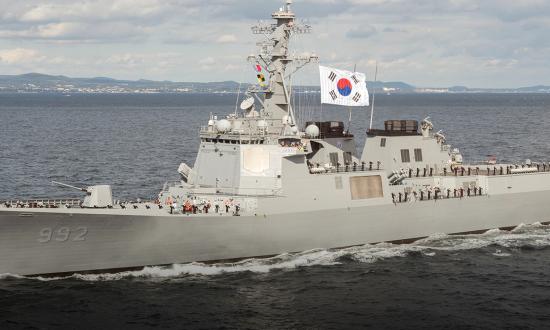The Irish Naval Service has designed its modern fleet of offshore patrol vessels (OPVs) with a focus on the security of its exclusive economic zone, search and rescue, fisheries protection, and general constabulary duties rather than advanced warfighting capabilities. Named in honor of renowned Irish literary figures, the four-ship PV90 class includes lead ship Samuel Beckett and younger sisters the James Joyce, William Butler Yeats, and George Bernard Shaw.
These four OPVs, built by Appledore shipbuilders in the United Kingdom, are an expanded version of Ireland’s predecessor Roisín (PV80) class, which entered service between 1999 and 2001. The most significant enhancement of the Samuel Beckett design over the Roisín is the addition of a 36-foot section lengthening the newer OPV hulls to provide additional space and increase adverse weather capabilities in the often-stormy North Atlantic.
Construction of the Samuel Beckett began in 2012, and she joined the fleet in April 2014. Deliveries of her sisters followed in 2015, 2016, and 2019.
The PV90 design measures 295-feet long with a 46-foot beam and a draft of 12.5 feet. Displacing 2,255 tons fully loaded, the Samuel Beckett OPVs operate with a small crew of only 44, including 6 officers. Space is reserved for ten additional personnel as dictated by mission requirements. Built largely to commercial rather than military specifications, the four ships mount one 76-mm OTO Melara gun forward. Two 20-mm Rheinmetall cannons are carried abreast the funnel, one on the port and one on the starboard side. Two 12.7-mm Browning heavy machine guns and four 7.62-mm general-purpose machine guns are mounted at various points for lighter duties.
The class can carry up to three eight-meter rigid hulled inflatable boats (RHIBs) for interceptor missions. Two of the RHIBs are operated via port and starboard davits, while a third is carried aft in a cradle. A deck stowage platform is fitted toward the stern for up to three 20-foot equivalent storage containers. A five-ton crane is mounted nearby on the port side. The class does not have a hangar or landing deck for manned helicopter operations, but can potentially accommodate unmanned aircraft or submersibles and has a decompression chamber for diving operations.
The Samuel Beckett class is powered by a diesel-electric propulsion system incorporating two diesels linked with two five-bladed controllable-pitch propellers. The ships have a top speed of 23 knots and can travel 6,000 nm economically at 15 knots. A bow thruster is fitted to enhance low-speed operations and a power take-in system permits 8-knot operations on electrical power.
The four OPVs have been active on a variety of important operations since entering service. Notable missions have included assisting with the migrant crisis in the Mediterranean Sea and supporting Ireland’s COVID-19 response.






